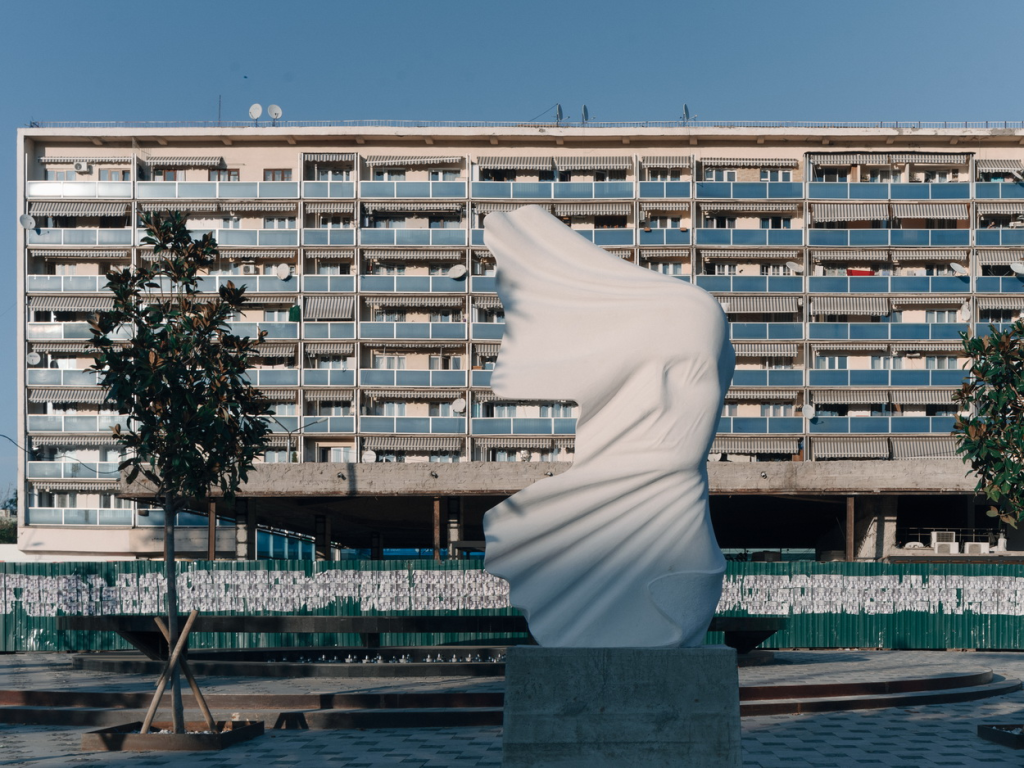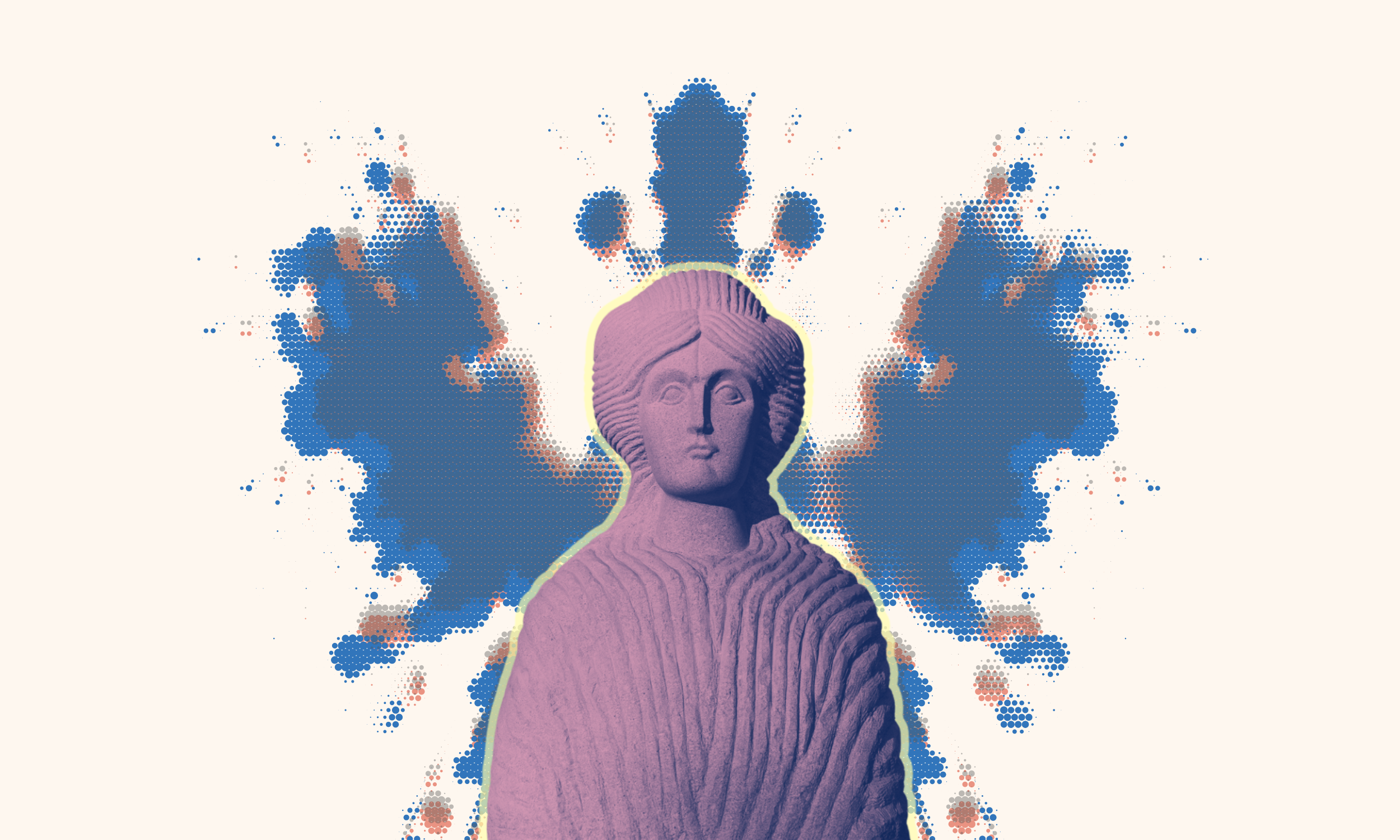Dispatch – February 18: Rorschach Test
It is lonely at the top.
It gets even lonelier if you are a top ruling party official in Georgia with a taste for contemporary art. Your party’s conservative voters don’t understand or appreciate it, and your party has long alienated those who do. That’s the tricky situation Tbilisi Mayor Kakha Kaladze has recently found himself in. A state-funded creative project was supposed to bring contemporary art to a wider public in the Georgian capital and perhaps boost Kaladze’s popularity with the artsy crowd. But the art-loving mayor ended up in a bitter controversy – and possibly got the distraction he needed.
Here is Nini and the Dispatch, where we will talk about braids, Rorschach tests, and the unintended consequences of Georgian political artistry.
Braids of Fury
“The Braids of Time” is a statue of a woman standing three meters high. It has recently appeared in Saarbruecken (formerly Vorontsov) Square, one of the busiest places in downtown Tbilisi. Curiously, this is also the first public square in Tbilisi ever to be graced with a statue – that of Mikhail Vorontsov, the Russian Viceroy of the Caucasus.
But “The Braids of Time” is a different affair from the conquering Count’s erstwhile grandeur. The pale woman is fully covered in braids that gradually morph into roots as they reach the ground below. Despite its height, original form, and popular location, the statue doesn’t seem to demand immediate attention. Its colorless shape easily blends into the gloomy winter palette of its surroundings. The absence of a pedestal only adds to its modesty. At first glance, nothing about the statue suggests that it nearly became the reason for the nation to plunge into another (gracefully only verbal) civil war.
- — Remove this reptile from the city!
- — Quiet down, retrograde!
- — There is nothing Georgian in it!
- — I like it, it’s pretty!
- — How do I present this place to tourists?!
- — It’s very unique
- — If that’s a statue, then I am an emperor of China!
These are some of the battle cries of Georgia’s latest social media fight.
Giorgi Khaniashvili, a young Georgian sculptor, created the publicly funded work. Carved in classical Greek aesthetics, the statue is meant (at least according to the official description) to reflect the Hellenistic influences on the formation of Georgian identity, inspired by the stories of two women: Medea of Colchis, a prominent protagonist (or antagonist?) from the Greek myth of the Argonauts, and Saint Nino, who preached Christianity in Georgia in the 4th century. Legend has it that Nino, who is said to have come from a Greek-speaking Roman family in Cappadocia, used her braids to tie the cross she carried on her mission to convert pagan Georgians.

But your kids are gonna love it!
References to faith or European identity proved insufficient to win the hearts of all Georgians. The pale mass of the statue easily created a vast space for the nation to project all of its religious, political, ideological, or aesthetic divisions onto its form. Where some saw God, others saw godlessness. Where some saw women’s empowerment, others saw their oppression. Where some saw beauty, others saw a frightening uncertainty. Where some saw the freedom of art, others were angry they weren’t consulted first.
“I didn’t know we had so many art experts in the country,” Mayor Kaladze sighed as he searched for excuses amid mounting discontent.
The piece had been installed as part of the Tbilisi Public Art Fund, established by Kaladze’s office last year. The fund’s benevolent goals include promoting contemporary art, increasing its accessibility, and supporting Georgian artists. But critics are skeptical. The fund is nothing but “an institution established by [Georgian Dream] to buy artists,” according to a review given by Nata Peradze, the activist recently released from prison after serving five days for defacing the “Stalin icon.”
The fund announces calls for artists and supports the chosen ones to realize large projects they couldn’t otherwise afford. Some of these projects have already appeared throughout the capital: “Resistance,” a modernist sculpture by artist Davit Natidze, was installed in Tbilisi’s old Avlabari district. There were certainly eyebrows raised at the apparent mismatch between his idea and the visions of the government that sponsored it, but Tbilisi didn’t go far in opposing it – and the area wasn’t central enough to invite everyone’s opinion. Then it was the Rustaveli subway escalator that hosted a sound art project created by several Georgian artists – to entertain Tbilisi commuters on their slow descent into the crowded abyss, or perhaps to excite conservative American journalists in case their flights are diverted and they end up exploring the subways of Russia-threatened countries as well.
The soothing sounds of that project were also received with relative calm. But “The Braids of Time” proved different. By some magic or divinity bestowed upon it by its two female muses, overnight the statue managed to transform Georgian adults into schoolboys who, upon seeing their classmate’s long braids, feel an irresistible urge to do something with (or about) them.

Basic instincts?
The uproar may have distracted from a parallel backlash Mr. Kaladze faces for his protracted transport and road reforms. There, too, the mayor is often caught between two fires, and his growing “me against the world” situations may even evoke some sympathy among compassionate Georgians, were it not for his considerable political power, vast wealth, large family, and good looks lining up to offer him some solace in PR adversity. So let’s save our tears for someone else: Georgia’s struggling artists.
These artists have found themselves in quite a dilemma: if they accept state funding to pursue their creative dreams and share the pieces of their artistic inspiration with the public, they face outrage for collaborating with the ruling party. That’s particularly true amid the rapidly fading line between the state and the party, and given the mounting record of the cultural authorities alienating art workers. If they refuse, they’ll end up denying themselves a rare opportunity, while the government will continue to capitalize on painting Georgian artists as snobs who wouldn’t do anything of great social value. The reviled Minister of Culture, Tea Tsulukiani, has been doing precisely that: waging wars with artists while claiming to be promoting public access to art… that is if you count as “public” an unprecedented number of loyalists whom she has booked on flights to the Berlinale Film Festival.
So, instead of lamenting the Georgians’ dismal art expertise, the mayor must probably blame part of the hostility on his colleagues. Kaladze may also be comforted that he is not the first lonely artistic ruler in Georgia: ex-President Mikheil Saakashvili also sought expression of his Nero-esque qualities in art and architecture. But if today it is the public reaction that prompts our amateurish psychoanalysis, back then the criticism itself was psychoanalytical. Critics complained that Misha’s favorite projects were way too… phallocentric.
But fear not – those phallocentric influences haven’t gone anywhere. Hardly a day goes by without another skyscraper project being announced, often in places without room or need for them. That’s why some were surprised to see so much aesthetic anger over the three-meter statue when some of the critics barely raise their voices against the ungodly megaprojects.
Anyway, we remain curious about the results of this latest nationwide Rorschach test – and hope that our mayor’s office will publish the findings ASAP.
